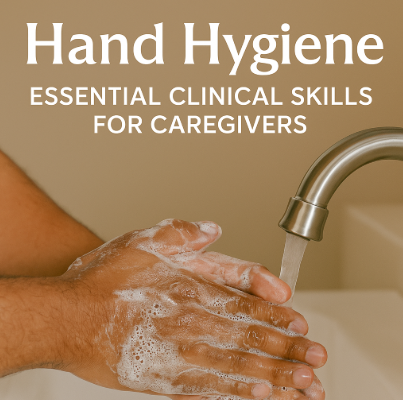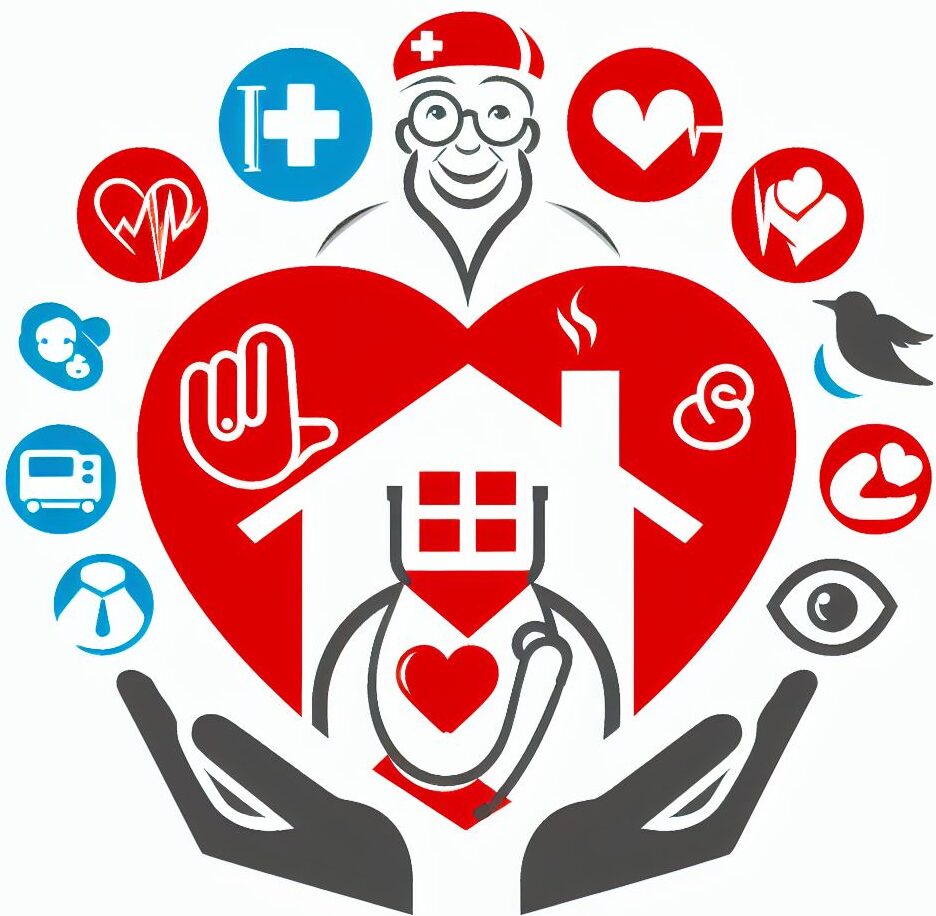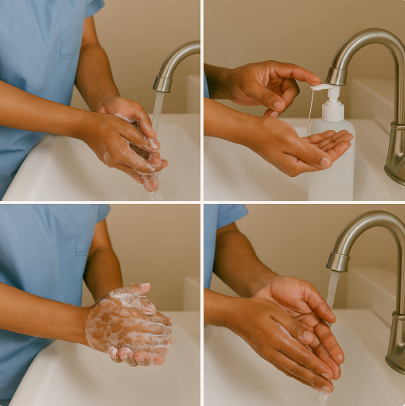Hand hygiene is the foundation of safe and effective caregiving. It is the first defense against the spread of infection, protecting both caregiver and client.

In a home care setting, where infection control relies heavily on individual responsibility, proper handwashing becomes one of the most important habits a caregiver can develop.
Whether you’re preparing meals, assisting with personal care, or supporting medical needs, clean hands help prevent the spread of illness. Moreover, it protects you, your client, and others you come in contact with.
When This Skill Is Used
Caregivers should practice hand hygiene throughout the day, especially at the following times:
- Before and after direct contact with the client
- Before preparing, serving, or assisting with meals
- After helping with toileting, perineal care, or incontinence care
- After touching bodily fluids, soiled laundry, or contaminated surfaces
- Before and after handling wound dressings, catheters, or medical supplies
- After removing disposable gloves
- After handling trash or household chemicals
In short, if your hands are visibly soiled, if you’ve been in contact with bodily fluids, or if you’re switching from one task to another—it’s time to wash your hands.
Hand Hygiene Supplies and Equipment Needed
For proper hand hygiene, keep these basic supplies accessible in the home environment:
- Clean running water (warm or cold)
- Soap (preferably liquid for the caregiver)
- Paper towels or clean cloth towel
- Alcohol-based hand sanitizer (at least 60% alcohol) – for use when soap and water are not available
- Disposable gloves – used as a barrier, not as a substitute for handwashing
Step-by-Step Instructions | Proper Hand Hygiene
A. Washing with Soap and Water (Preferred Method)
- Turn on water with barrier and discard barrier.
- Wet hands and wrist with clean, running water.
- Apply enough soap to cover all hand and wrist surfaces.
- Rub hands palm to palm.
- Rub the back of each hand with the opposite palm, interlacing fingers and rubbing between them.
- Wash nail bed of each finger.
- Clean underneath each fingernail using thumbnail.
- Rub fingertips against the opposite palm to clean nails.
- Continue washing for at least 20 seconds.
- Rinse each hand thoroughly by holding under running water.
- Total time should be between 30 and 35 seconds.
- Beginning from fingertips, dry each hand using separate paper towel or a clean cloth. Use different areas of the cloth for each hand.
- Use a barrier to turn off the faucet if it’s not hands-free.
- Discard barrier.
B. Using Hand Sanitizer (When Soap and Water Aren’t Available)
- Apply sanitizer.
- Rub hands together, covering all surfaces.
- Follow the same motions as with handwashing.
- Continue rubbing until hands are completely dry (at least 20–30 seconds).
Important: Hand sanitizer is not effective on visibly soiled hands or after contact with bodily fluids—use soap and water in those cases.
Essential Caregiver Tips
Best Practices
- Keep fingernails short and clean to prevent germs from hiding underneath.
- Avoid wearing rings, watches, or bracelets during care activities, when necessary.
- Use fragrance-free lotion to prevent skin dryness from frequent washing.
- Always wash your hands after removing gloves—even if you don’t think they were contaminated.
- Place reminder signs near sinks or client care areas if needed.
Maintaining Dignity and Respect
Washing your hands in front of the client shows respect for their health and helps build trust. Let them know why you’re doing it—especially if the client has cognitive impairments such as dementia.
If the client is capable, encourage them to participate in their own hand hygiene to promote independence and dignity. Otherwise, ensure their hands are kept clean by using wipes or wet washcloth.
When to Report or Seek Help
Let the care team or family know if:
- You or the client develop a rash, irritation, or broken skin from soap or sanitizer
- You notice signs of infection (e.g., redness, swelling, drainage) on the client’s hands
- Supplies such as soap or paper towels are consistently unavailable
Conclusion | Hand Hygiene Clinical Skills
Hand hygiene may seem like a small act, but it has a big impact on your client’s health and your own.
As the first line of defense in preventing infections, consistent and proper handwashing sets the tone for every other aspect of care.
Make it a habit, a priority, and a reflection of your commitment to quality care.
This article is part of an ongoing Clinical Skills Series designed to support caregivers in providing safe, compassionate, and effective care within the home setting.
Each installment offers practical guidance, step-by-step instructions, and professional insights tailored to everyday caregiving.
To learn more about the purpose of this series and what to expect in upcoming articles, visit the Introduction to Clinical Skills for Caregivers.
What strategies have helped you stay consistent with hand hygiene during your caregiving routine?
Share your thoughts, questions, or helpful tips in the comments below. Your voice could be just what another caregiver needs today.
Veron | Entrepreneur | The Way 4Word Enterprises

